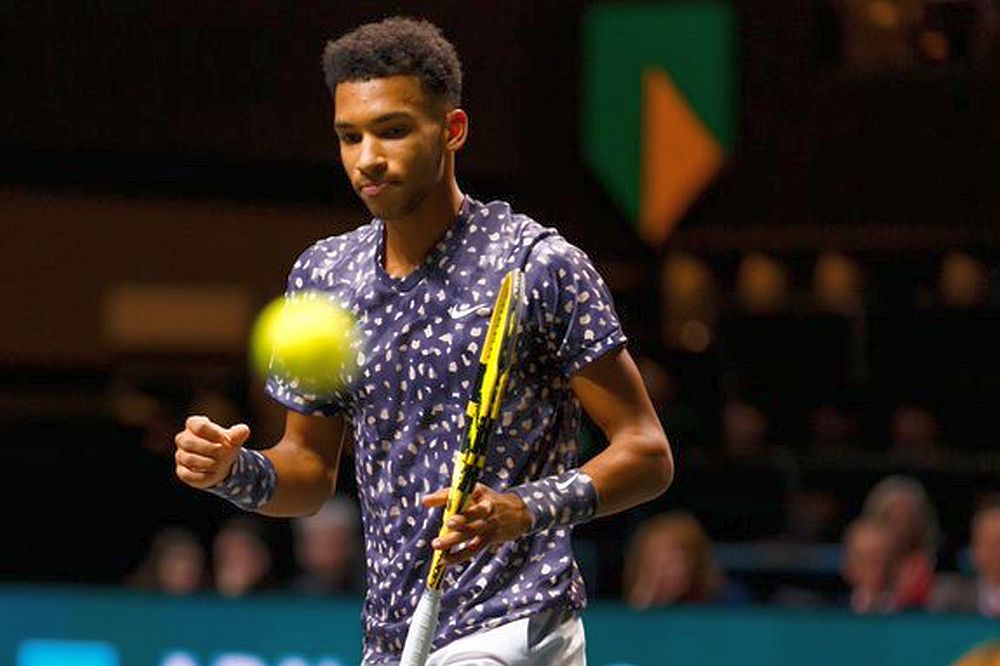The mixture of players from different ethnicities and backgrounds reaching the latter stages of the US Open serves as a ‘good example’ for the global community in the eyes of Felix Auger-Aliassime.
The 20-year-old Canadian, whose father is originally from the African country of Togo, is one of two black men to reach the fourth round along with Frances Tiafoe. Reaching the second week of a major for the first time is not only a landmark in the career of the rising star, but one he hopes will help inspire younger kids in the game from different minorities. Auger-Aliassime grew up in Canada and interacted with various minorities from a young age in what he describes as a ‘melting point.’
“Seeing players from different ethnicities, different backgrounds reaching the later stages of tournaments like these, I think it’s a really good example for the people watching us, the kids,” he said.
“I was thinking that you want to send out a good message. You hope that you’re leading by example, that kids, in you, they see belief, that you can reach that whatever city, country you come from, whatever neighbourhood you come from.’
“I hope this gives a lot of belief to people, and it’s a good message of love.”
It isn’t just the men who are making waves in this department. This year 12 black American women played in the women’s single draw which almost equated to a tenth of the entire field. This includes those from multicultural backgrounds and wildcard recipients. In recent years the Williams sisters have been credited for triggering a surge of interest in the sport from non-white players. Out of the 12, 38-year-old Serena Williams is the only left in the draw.
Although it is not just on the court where the New York major is showcasing its diversity with Auger-Aliassime saying there is also a ‘good atmosphere’ behind the scenes.
“The players and staff, you have to understand the staff here in the locker rooms, in the backgrounds, behind the scenes of the site, there’s a lot of diversity, Black people. The support that we get from them, the connection, the laughs, it’s just a really good atmosphere. I think all the players here like it,” he commented.
World No.82 Tiafoe is the son of immigrants from Sierra Leone who moved to America via the Green Card lottery system during the 1990s. He grew up sleeping on the floor of a tennis facility in Maryland, where his father worked as a maintenance man. For the American, he hopes his journey is one others can relate to.
“Whether it’s tennis or whatever they’re doing, I just want to see people of colour in my communities win,” Tiafoe said following his win over Marton Fucsovics on Saturday.
“If they get the inspiration from Frances Tiafoe, that’s even better. That’s why I try to give it my all. Again, I’m not doing it for me. It’s way bigger than that.”
This year’s US Open launched their ‘Be Open’ campaign which focuses on diversity, equity, and inclusion. For the first time in history, players are allowed to walk onto the court showing ‘physical support of social justice.’ Highlighted by Naomi Osaka who entered each of her matches wearing a different name of somebody who has been a victim of police brutality based on their ethnicity.
“We wanted to lean into our longstanding values of promoting equity and justice for all,” USTA managing director of marketing, Nicole Kankam, told Associations Now. “We wanted to shine a light on this issue and honour the heroes of this movement.”
Of course, the US Open only takes place over two weeks each year but Auger-Aliassime believes the limelight being shines on these issues will have a positive impact on the future. Saying that he hopes will help trigger a surge in tennis popularity across Africa. A continent with a population of more than a billion but only has three players currently ranked inside the top 200 on the ATP Tour.
“It’s just a great message to send out, to be open to diversity, people from different backgrounds.” Auger-Aliassime concludes.
“Hopefully that will keep going. Hopefully we’ll get even more players from Africa even. I know that’s something that people have tried to do, bring more players from the African continent to professional tennis. Hopefully that happens in the future.”






